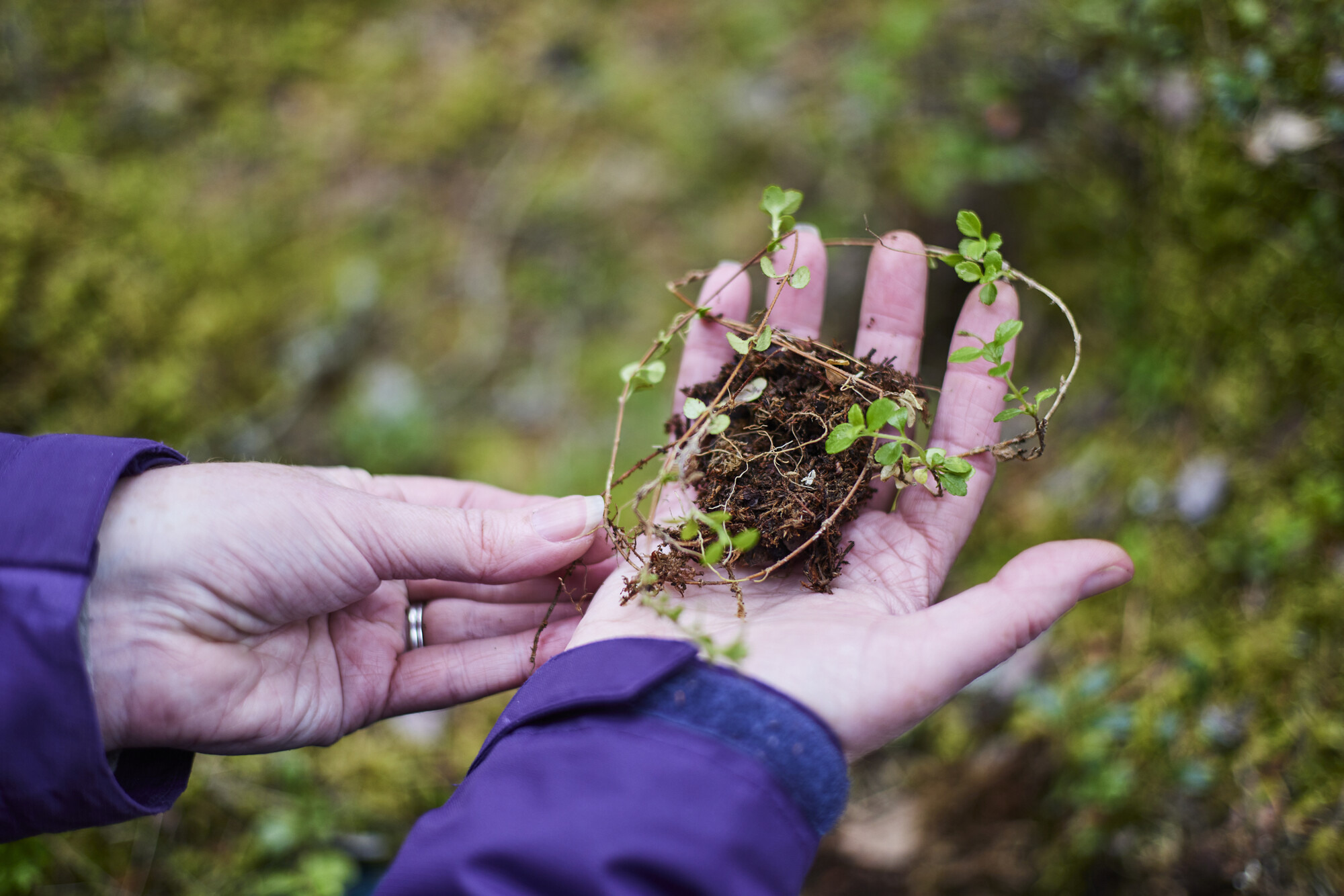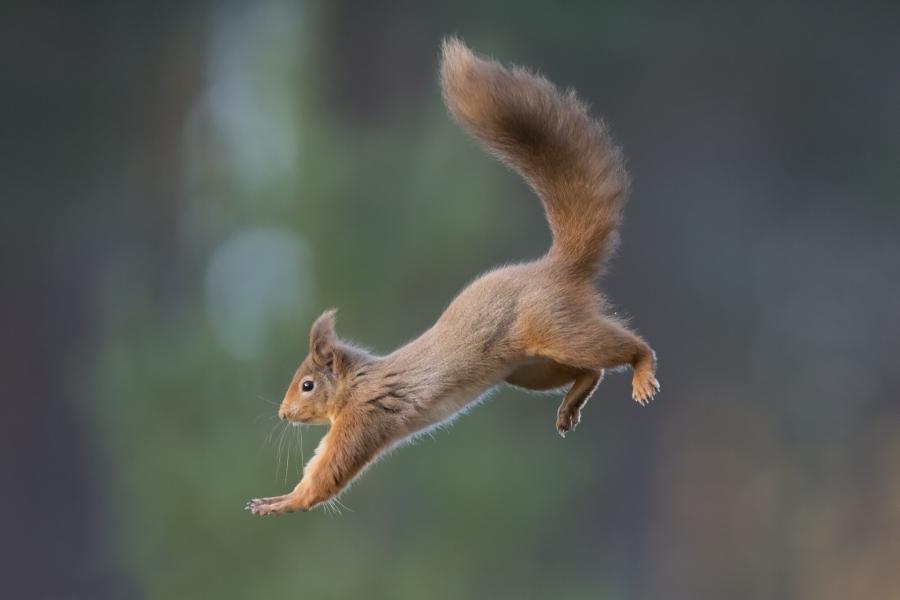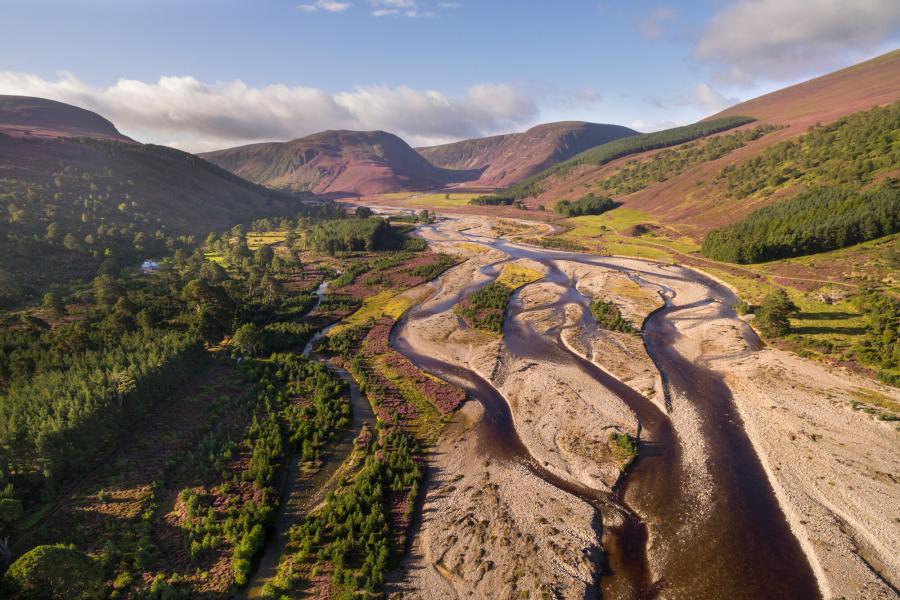Nature and wildlife experiences

It’s hard to overstate the natural significance of the Cairngorms. For starters: it’s the UK’s largest national park, a quarter of the UK's rare and endangered species live here, and there are nine nature reserves within its boundaries. As an internationally recognised conservation hub, there’s already a lot of amazing work underway to protect the region’s unique plant and animal life. And we all – residents, visitors and businesses alike – can play a part in looking after it for the next generation.
The natural landscapes and habitats
The National Park takes its name from the Cairngorms (Mhonaidh Ruaidh in Gaelic), the region’s dominant mountain range which contains five of the six highest mountains in the UK. These mountains centre around a unique plateau with an arctic-alpine ecosystem and year-round snow patches.
Below the mountains lie moorland and woodlands, including some of the last remnants of the ancient Caledonian pine forest which once covered 17% of Scotland. The region’s waterways - its lochs, rivers, burns (small streams) and bogs - are another vital part of the ecosystem. The sources of four renowned salmon rivers – the Spey, Dee, Tay and South Esk – spring from the Cairngorms, supporting the globally endangered freshwater pearl mussel and other species.
Plants of the Cairngorms
The tundra-like Cairngorm plateau supports species that don’t grow anywhere else in the UK. Several plants and flowers, including Alpine lady’s mantle and starry saxifrage, survive ravaging winds and sub-zero temperatures to emerge each spring after the snow melts. At lower altitudes, birch and pine woodlands are decorated with ground-level juniper, heather, wildflowers and blaeberry bushes.
Wildlife
Equally as important as the rare plants that flourish in the National Park is the animal life that depends on the region. Birds, mammals, fish and invertebrates coexist from the highest slopes down to the deepest lochs. The National Park is home to some of the rarest wildlife in the UK, such as the mountain hare, red squirrel, Scottish wildcat, capercaillie and Scottish crossbill.
Wildlife experiences
Several local providers run wildlife-watching tours and photography trips led by experts in this region’s unique ecosystem. Visitor centres, which delve into detail about particular species, are dotted around the National Park, and there are free-to-use hides in key locations, too.
Our Lek it Be campaign is dedicated to reducing disturbance to capercaillie and promoting compliance with the law as it is a wildlife crime to intentionally or recklessly disturb breeding capercaillie.
Led by the Park Authority in collaboration with the birding, photography and wildlife guiding community, local land managers and Police Scotland, the campaign champions collective responsibility. It calls upon birders, photographers and wildlife guides to refrain from seeking out capercaillie and to report any instances of disturbance they witness.
Featured
Wildlife
The Cairngorms National Park is home to a quarter of the UK’s rare and endangered species. Its rich habitats are a haven for an array of wildlife, from iconic birds to elusive plants and flowers.
Wildfire management
As the climate changes, the risk of wildfires is ever more present in our daily lives and in a National Park, a wildfire has the potential to be devastating.
What we do
From pioneering conservation projects to community engagement and active travel, find out more about the range of work happening across the National Park.

Lek It Be Champions
Find out more about our Lek it Be champions - the guiding companies and operators that are leading the way and not looking for capercaillie.

Nature and wildlife experiences
Find out more about nature and wildlife on the VisitCairngorms website.







